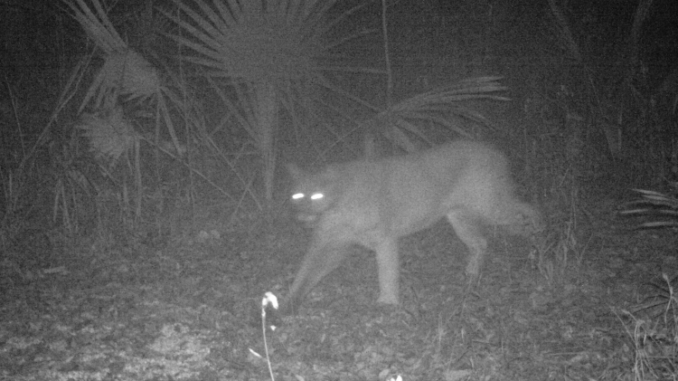
Morehouse Parish cat state’s first confirmed sighting since August 2011
Editor’s Note: This story has been updated with the actual trail cam picture of the cougar from Morehouse Parish. The Louisiana Department of Wildlife and Fisheries initially declined on Wednesday to release the photo, which was provided to LouisianaSportsman.com by the landowner.
A Morehouse Parish trail cam picture authenticated by biologists with the Louisiana Department of Wildlife and Fisheries is the state’s first confirmed cougar sighting since 2011.
Maria Davidson, LDWF’s large carnivore program manager, said it’s impossible to tell from the Nov. 23 photo if the cougar shown is a wild, free-ranging animal or an escaped pet.
“It’s an authentic picture. There’s no doubt about it when you look at it that it’s a cougar,” Davidson said. “But obviously, there’s no way to tell if it’s a released pet.”
Pet or not, Davidson said to give the animal plenty of space if it’s encountered in the woods or a neighborhood.
“Treat it as a wild animal and let it go it’s own way,” she said.
Although it’s illegal to own a cougar in Louisiana, there could be some held as pets. According to press release from the LDWF, cougars are protected under state and federal law and it’s illegal to kill them.
Penalties for killing a cougar in Louisiana may include up to one year in jail and/or a $100,000 fine, the release states.
Anyone who has additional trail cam pics of the big cat is asked to submit them to LDWF for documentation, Davidson said.
“If people do get a picture of a cougar, we would like to authenticate the picture and document the occurrence,” she said. “We don’t release indiviual landowner information, or specific locations, so their privacy is respected.
“But we would like to document the occurrence if somebody else gets a picture.”
To report sightings of cougars with physical evidence such as photos, tracks and/or scat, contact Davidson at 337-262-2080 or via email here.
The mountain lion, cougar, panther or puma are all names that refer to the same animal. Its color ranges from light tan to brownish grey. The only species of big cats that occur as black are the jaguar and leopard. Jaguars are native to South America and leopards to Africa. Both species can occur as spotted or black, although in both cases the spotted variety is much more common.
Although the department has received many calls about black panthers, there has never been a documented case of a black cougar anywhere in North America. The state’s first confirmed cougars sighting occurred in 2002 in Lake Fausse Point State Park.
A cougar was shot and killed in a neighborhood by the Bossier City Police Department on Nov. 30, 2008. The DNA from that cougar confirmed it originated from a New Mexico population, the release states.
Sightings of cougars in Louisiana are likely animals dispersing from existing populations, according to the LDWF release. An expanding population in Texas can produce dispersing individual cougars that move into suitable habitat in Louisiana. Young males are known to disperse from their birthplace and travel hundreds of mile to seek their own territories.


